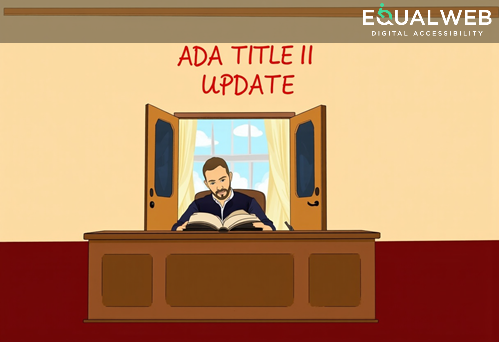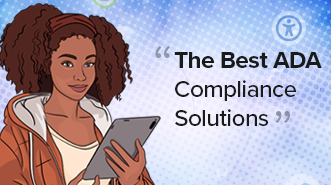Perceivable Content and Information
For a website to be accessible, users must be able to perceive all information, regardless of their abilities. This means presenting content in multiple ways so that individuals with visual, auditory, or cognitive impairments can access and understand it. A critical component of perceivable content is providing alternative text (alt text) for all non-decorative images so that screen readers can describe visuals.
Audio and video content should also be made accessible by adding captions and transcripts to ensure that users who are deaf or hard of hearing can engage with the material. Additionally, ensuring sufficient color contrast between text and background elements improves readability for individuals with low vision or color blindness. Without proper contrast, some users may struggle to differentiate between important pieces of information, making it difficult to navigate the site.
By incorporating these strategies, websites become more inclusive, ensuring that all users can consume digital content effectively, regardless of their abilities.
Operable Navigation and Functionality
Websites must be fully operable, allowing users to navigate and interact with them through various input methods. Many individuals with mobility impairments rely on assistive devices such as keyboards, voice commands, or adaptive switches to browse the web. To accommodate these users, keyboard accessibility should be prioritized, ensuring all interactive elements, such as buttons, links, and form fields, can be accessed without a mouse.
A well-designed website should also include visible focus indicators that help users track their navigation across the page when using a keyboard or assistive technology. Without clear focus indicators, individuals relying on keyboard navigation may struggle to determine their current position on the page. Additionally, avoiding time-based interactions can prevent accessibility barriers for users who require additional time to complete actions.
These measures ensure that individuals with disabilities can operate and interact with digital content efficiently, creating a more seamless user experience for everyone.
Understandable Content and Interface
An accessible website should be easy to understand, ensuring that the content and user interface are structured in a way that is intuitive and straightforward. Websites can improve understandability by using clear and simple language, avoiding complex jargon and difficult sentence structures that may confuse users. The goal is to ensure that information is accessible to a broad audience, including individuals with cognitive disabilities or those who may not be fluent in the website’s primary language.
Proper content structuring is equally important. Organizing content with logical headings, paragraphs, and sections helps users navigate effectively and locate relevant information quickly. Additionally, providing meaningful error messages is crucial when users encounter mistakes while filling out forms or interacting with digital elements. Instead of displaying vague alerts like "Invalid entry," error messages should guide users with specific instructions on how to correct the issue.
A well-structured and understandable website allows users to find and process information efficiently, enhancing their overall experience.
Robust Compatibility with Assistive Technologies
To be truly accessible, websites must be robust, functioning effectively across various devices, browsers, and assistive technologies. This ensures that individuals with disabilities can interact with digital content regardless of the tools they use. Utilizing semantic HTML allows screen readers to interpret and present content accurately, helping visually impaired users understand the page structure.
For more complex interactive elements, implementing
ARIA (Accessible Rich Internet Applications) attributes can improve accessibility, ensuring that dynamic web content is fully usable with assistive technologies. Regular testing with screen readers, magnifiers, and speech recognition tools is essential to identify and resolve compatibility issues. Without proper testing, accessibility barriers may go unnoticed, preventing some users from fully interacting with a website.
By following these best practices, websites can remain accessible as technology evolves, accommodating both current and future users.
Continuous Accessibility Testing and Maintenance
Web accessibility is not a one-time project but an ongoing commitment. As websites grow and change, new accessibility barriers can emerge. To maintain compliance and usability, organizations should conduct regular WCAG compliance audits to ensure that all digital content meets the latest accessibility standards. Accessibility should also be considered a core aspect of the web development cycle, preventing barriers from being introduced in the first place.
Real-world testing is another essential aspect of maintaining accessibility. Involving users with disabilities in usability testing helps identify pain points and areas for improvement that automated testing tools may not detect. Additionally, businesses should stay updated on evolving WCAG requirements by updating accessibility guidelines and policies regularly.
By committing to continuous testing and maintenance, organizations can ensure a seamless experience for all users while minimizing legal risks.
Conclusion
Implementing the principles of accessible web design is essential for creating an inclusive, user-friendly digital experience. Ensuring that content is perceivable, operable, understandable, and robust allows businesses to meet WCAG standards while improving usability for all visitors. An accessible website is not only a legal requirement but also a powerful tool for enhancing engagement and customer satisfaction.
By prioritizing accessibility from the ground up and committing to continuous improvements, businesses can create digital experiences that are welcoming to all users. Organizations looking for expert accessibility solutions can benefit from cutting-edge tools and services designed to meet web accessibility requirements. Contact us today to ensure your website is inclusive and compliant.




